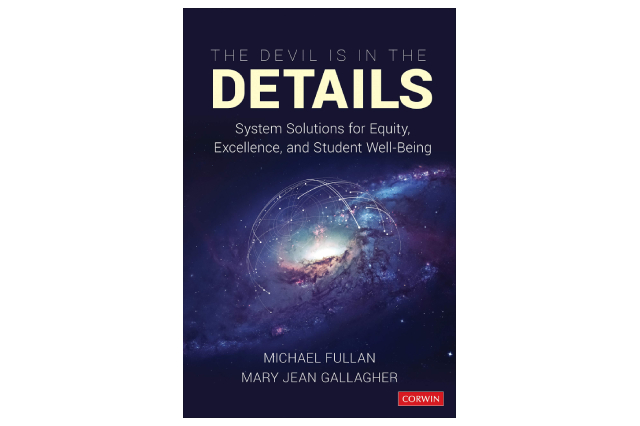The Devil is in the Details – System Solutions for Equity, Excellence and Student Well-Being is the latest book written by Michael Fullan, along with co-author, Mary Jean Gallagher
I was immediately attracted to the title of the book because it described my own experience of school improvement strategies. Whilst many schools implement the same or very similar school improvement strategies, the impact and outcomes of the ‘same’ strategy can be vastly different, depending on the leadership team. The devil IS in the details (and the delivery)!
When people say “The devil is in the details,” they usually mean unforeseen things inevitably happen – things that thwart the best-laid plans. However, in school improvement the devil is in the details refers to the slight differences between two schools who purportedly are doing the ‘same’ things to improve their schools. Whilst the two schools might appear to have the right documents and approaches (eg annual improvement plans, SMART goals, key strategies and targeted ‘coaches’), one school gets results and sustainable change, the other, do not.
In the book, Fullan and Gallagher make a startling prediction, “The world is heading into the jaws of mass extinction or radical decline of human existence. Whether it will take 20 or 100 years remains to be seen.”
They argue that the human race is getting increasingly close to a tipping point that could go either way: toward flourishing or radical decline. Inequity in society and in education is one of the key issues contributing to uncertainty and anxiety.
The gap between the ‘haves’ and the ‘have nots’ is wider than ever and appears to be growing. “We have evolved to be extremely sensitive to social status. Bigger material differences create bigger social distances between us and add to feelings of superiority and inferiority. As people become more concerned with status they become more out for themselves.” (Wilkinson and Pickett, 2019)
Wilkinson and Pickett argue that all major health and social problems are more common in unequal societies. In the so-called developed countries, the United States and the United Kingdom lead the world in “worse” health and social problems and in inequity.
Disengagement in learning is also highlighted. Many students have been switched off learning as a result of their school experience. Often that love of learning of four year-olds has been disciplined and ‘tested’ out of 14 year-olds. According to Fullan the majority of students – some two thirds or more – find that present schooling is not meaningful. Stress is high and increasing at a rapid pace from all SES levels.
Fullan and Gallagher argue, “We need a new moral imperative and a system transformation strategy that goes along with it to have any chance of surviving for the better. The moral imperative with the help of education is “to become better at learning and better at life”.
They rightly identify that the most formidable obstacle is the inertia of the status quo. However, what we have been doing isn’t working. According to the head of PISA at the OECD, Andreas Schleicher, “Over the past decade, there has been virtually no improvement in the learning outcomes of students in the Western world, even though expenditure on schooling rose by almost 20% during this period.”
In 2011 Fullan highlighted the “Wrong drivers for whole system reform”. A driver is a policy and a wrong driver is a policy that doesn’t work. Fullan says there were four: punitive accountability, individualism, technology and ad hoc policies including multiple ever-changing initiatives.” Does that sound familiar?
Fullan (2011) says the right drivers are Capacity building, Collaborative work, Pedagogy and Systemness. In “The Devil is in the Details” Fullan and Gallagher observe that “more and more people, including politicians, are becoming convinced that the policy drivers that they have favoured for the past two decades, including the focus on literacy, testing, narrow accountability, and the like, are indeed wrong – that is, they do not bring about system change. They are not only failing to get us anywhere but are actually propelling us backwards.
Perhaps Covid-19 gives us the impetus to overcome the inertia of the status quo because we are forced to do things differently. Schools are making changes in education delivery and rethinking schooling.
“The world is rapidly and increasingly becoming more troubled to the point that literacy, numeracy, high school graduation, and the like may be important foundational goals but are no longer nearly up to the challenges we face. Our students need these foundational goals; they also need much more….the majority of students are bored, alienated, stressed, or all three. Present-day schooling… is painfully unfit for the learning that is required for survival let alone “thrival”.
We need a very different school system and one that engages the world as part of a proactive solution.” (Fullan and Gallagher, 2020)
The high level goals espoused by Fullan and Gallagher are excellence, equity and well-being, and their connection to becoming good at life. In essence, the four represent the new “moral imperative” of education – replacing the more narrow “raise-the-bar and close-the-gap” standard relative to literacy, numeracy and high school graduation. You can purchase the book HERE.

